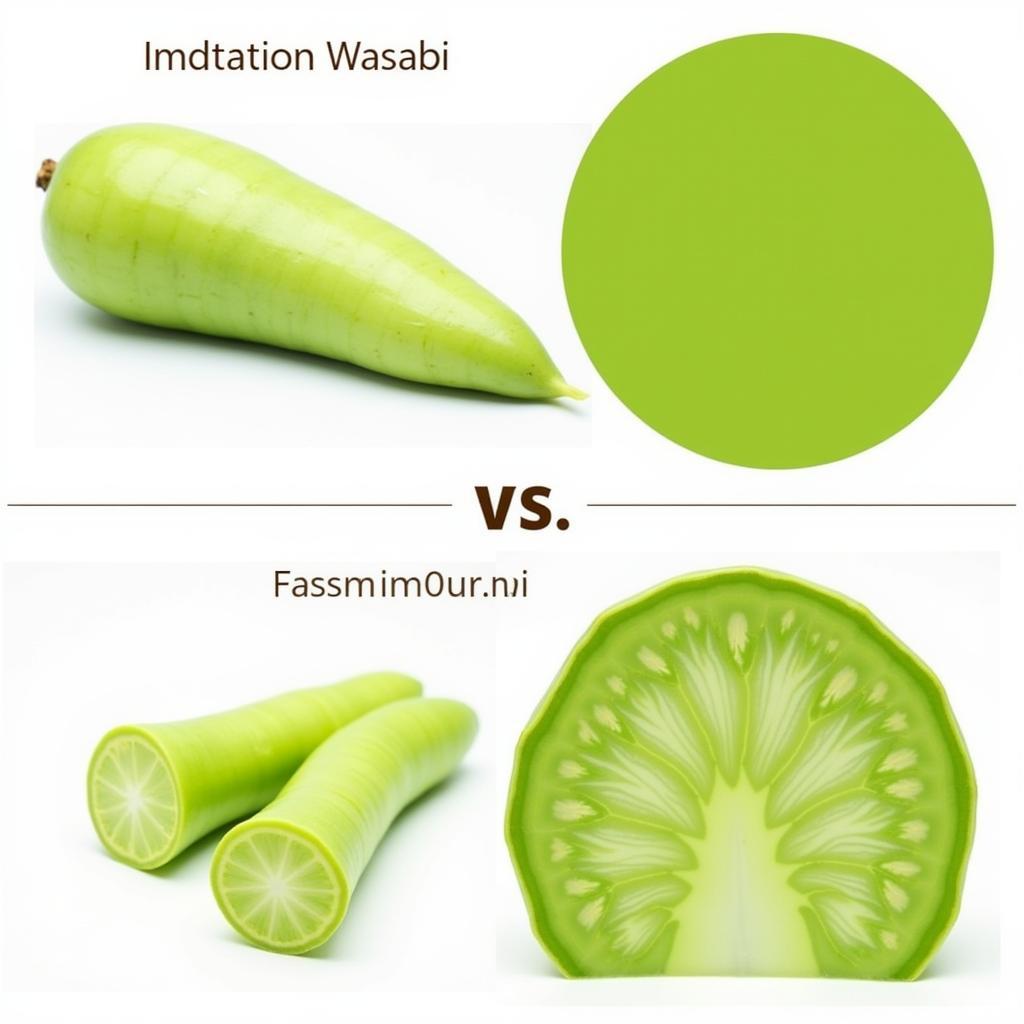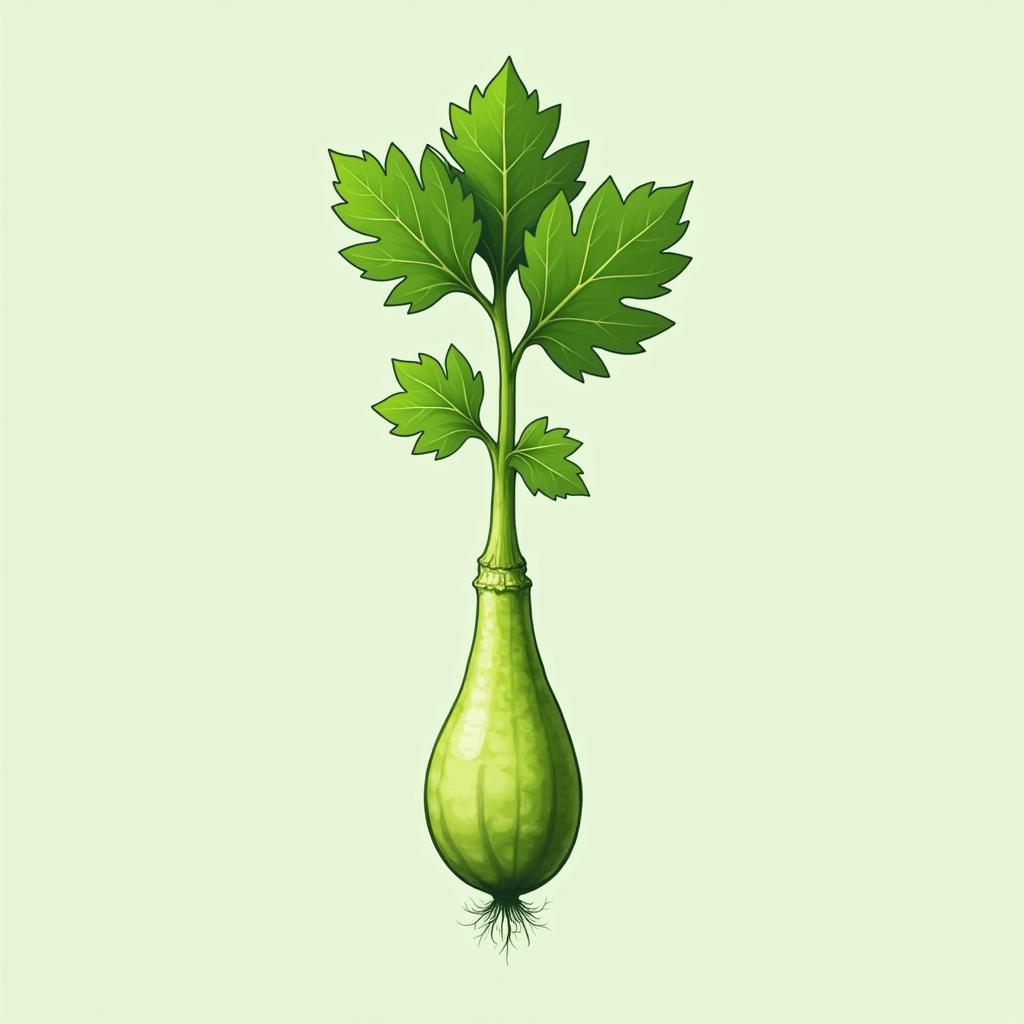What color is wasabi? The vibrant green condiment often served with sushi is instantly recognizable. But there’s more to wasabi’s color than meets the eye, and understanding its hues can reveal a lot about its quality and authenticity. From its natural shades to the artificial colors sometimes used, let’s dive into the world of wasabi and explore its vibrant green identity.
Decoding the Natural Color of Wasabi
True wasabi, derived from the Wasabia japonica plant, boasts a vibrant, natural green. This color ranges from a light, almost pastel green to a deeper, more emerald hue. The intensity of the green is influenced by several factors, including the plant’s age, growing conditions, and the specific part of the plant used. The rhizome, the primary part used for wasabi paste, typically yields the most vibrant green.
The green color of genuine wasabi comes from chlorophyll, the same pigment that gives plants their green color. Just like the leaves of a tree, the amount of chlorophyll in wasabi can vary depending on the plant’s health and how much sunlight it receives. This results in a spectrum of green shades, all within the realm of natural wasabi.
The Imposters: Unnatural Wasabi Colors
While true wasabi displays natural green hues, much of what is labeled “wasabi” in restaurants and stores isn’t the real deal. These imposters are typically made from horseradish, mustard, starch, and artificial coloring. This “wasabi” can be identified by its unnaturally bright, almost neon green color. This vibrant shade is a clear giveaway that artificial dyes have been used to mimic the appearance of real wasabi.
Another telltale sign of imitation wasabi is a uniformly consistent color. Real wasabi paste often has subtle variations in its green hue, adding to its natural appeal. If the color appears too perfect and lacks any depth or variation, it’s likely artificial.
 Wasabi Color Comparison: Real vs. Fake
Wasabi Color Comparison: Real vs. Fake
Why is Wasabi Green? The Science Behind the Shade
The green color in wasabi, just like in other green plants, comes from chlorophyll. Chlorophyll is essential for photosynthesis, the process plants use to convert sunlight into energy. This pigment absorbs light most effectively in the red and blue portions of the electromagnetic spectrum, reflecting the green light back, which is what we perceive.
The intensity of the green color in wasabi depends on the concentration of chlorophyll. Factors like the plant’s growing conditions, age, and the specific part of the plant used can influence chlorophyll levels, and thus the resulting shade of green.
What Does the Color of Wasabi Tell Us?
The color of wasabi can be a useful indicator of its quality and authenticity. A natural, vibrant green, with some variation in shade, suggests genuine wasabi. Conversely, an overly bright, uniform, or almost neon green is a sign of imitation wasabi containing artificial coloring.
 Wasabi Plant and Rhizome Showing Natural Green Color
Wasabi Plant and Rhizome Showing Natural Green Color
Identifying Real Wasabi: More than Just Color
While color is an important clue, it’s not the only way to distinguish real wasabi from imitation. Texture, flavor, and price are also key factors. Real wasabi has a grainy texture and a complex, fleeting heat that dissipates quickly. It’s also significantly more expensive than its horseradish-based counterparts.
What if My Wasabi is Not Green?
If your wasabi isn’t green, it’s almost certainly not real wasabi. Brown or other discolored wasabi suggests spoilage and should be avoided. Remember, fresh wasabi should have a vibrant green hue, indicative of its quality and freshness.
Conclusion: Appreciating the Green Hues of Wasabi
Understanding what color wasabi should be empowers you to discern the authentic from the imitation. Next time you encounter this pungent condiment, take a closer look at its color and consider the factors that contribute to its vibrant green identity. Remember, real wasabi showcases the beauty of nature’s palette, offering a distinct flavor and visual experience that sets it apart. If you need assistance or have questions about colors or home painting, feel free to contact us.
FAQ
-
What color is real wasabi? Real wasabi is a natural green, ranging from light to deep emerald.
-
Why is fake wasabi so bright green? Fake wasabi uses artificial coloring to mimic the appearance of real wasabi.
-
What does brown wasabi mean? Brown wasabi indicates spoilage and should not be consumed.
-
Is all green wasabi real? No, the color alone isn’t a guarantee of authenticity. Consider texture, flavor, and price.
-
How can I tell if wasabi is fresh? Fresh wasabi has a vibrant green color, grainy texture, and a complex, fleeting heat.
Need support? Contact us at Phone: 0373298888, Email: [email protected] or visit us at 86 Cầu Giấy, Hanoi. We have a 24/7 customer service team.

